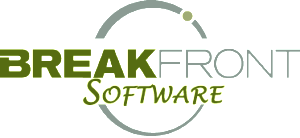
A Distressed Dealer contacted us about his dwindling sales. He was worried about being able to keep his dealership together while the market is recovering. Chris explained to the dealer the best way to get out of this hole. With an example about Julie, who is recently divorced and trying to remodel her kitchen to get a fresh start, Chris explains why product based selling is the wrong approach.
In this final segment of our 3 part series, our Distressed Dealer begins to realize that a process focused sale is a superior way to close deals.
DD: Why are my average transaction sizes falling year over year?
CM: Average transaction sizes erode over time with product based sellnig approaches. Look at the pyramid above:
At the top of the pyramid are higher transaction sales – kitchens that have a lot of upgrades and make good profit for the dealer. In the middle of the pyramid are typical kitchen sales – not a ton of upgrades, pretty straight-forward and pretty normal profit. At the bottom of the pyramid are small kitchens, not a lot of margin, pretty simple stuff.
Most dealers who started at the top of the pyramid before 2008 now find themselves at the bottom of the pyramid (or close to it) because their average ticket has declined since the crash.
And it declines not because of the economy (although that is what everyone likes to blame it on), but rather on an old style of selling that is only effective when demand is ridiculously high. Of course product-based selling isn’t very effective in any market condition, but when demand is high anyone can sit back and take orders – even with no sales process at all.
DD: You mean product-based selling is out of date?
CM: Yes. Some people refer to it as “product-based selling”, or “feature-based selling”. It existed many years ago when products were much simpler and the sales profession wasn’t as sophisticated as it is today.
It’s been out of date for a very very long time. And it’s a big problem because here’s what in essence happens: the dealership finds itself in a different market segment. Instead of catering to higher end jobs with more of profit, they find themselves competing at the bottom of the pyramid. At the bottom of the pyramid is every Tom, Dick and Harry who knows a little bit, or a lot, about product. There’s fierce competition because of the number of players who compete on price.
DD: Why did you say a “little bit or a lot” about product? If you’re a product expert wouldn’t you beat out the guys who don’t know that much?
CM: Not really. Remember, from the buyer’s perspective, their brain explodes after about three or four product features. In a product focused sale, it’s features galore. Wood species, color, finish – the works. A product focused salesperson or designer wows the buyer with their knowledge until his or her eyes glaze over, which happens in about 7.6 seconds. So if you know 1,000 product features or 5, from the buyers point of view, you’re the same as everybody else.
And if the buyer sees you as the same as the next guy, and they don’t really understand what it is they’re buying…
DD: Then you’ll distinguish and ultimately pick based on price!
CM: You betcha. So being at the bottom of the pyramid (or close to it) is a horrible place to be. Unless of course, you truly have the lowest price and you can crank out serious volume – or maybe if you’re Amazon.
DD: What about the top of the pyramid – how do I make it there?
CM: The competition is fierce there too, but for very different reasons. And this is the part most people miss: while there are only a few players at the top of the pyramid, they sell differently up there. They have a more sophisticated approach. The top of the pyramid outsells and out manuevers product-focused sales teams easily.
DD: What are they doing that is so different?
CM: They have a process focused sale. While the product focused salesperson loses Julie by confusing her in our previous example, the process focused salesperson sells to what Julie ultimately wants to buy.
DD: So Julie really is buying the ability to move on with her life…
CM: Exactly…and that’s priceless, isn’t it?

